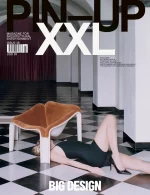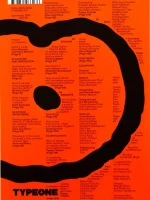Harvard Design, Issue 52: Instruments of Service
Relaunched in summer 2014, Harvard Design Magazine probes beyond the established design disciplines to enrich and diversify current discourse. Scholarly, poetic, and visually lush, each issue triggers new interpretations of design’s defining role in today’s culture. Distinguished and unexpected voices from the fields of architecture, landscape architecture, and urban planning meet those from the realms of art, science, literature, and beyond. A space for dialogue, speculation, and surprise: Harvard Design Magazine opens a door onto the applied device of design, and the people, places, and politics it engages.
In this issue:
At a moment when the word “design” has come to refer to everything and thus nothing, this issue examines the hidden mechanics and visible output of design practice in order to track the shifting role of designers in society and to gauge the capacity of designers to effect change in a world of mounting crises.
The issue poses a simple question: What do architects actually make and how is this changing?
Guest edited by Elizabeth Bowie Christoforetti and Jacob Reidel, assistant professors in practice of architecture at the Harvard Graduate School of Design, issue 52’s exploration is grounded in architecture. Once upon a time asserted to be the “mother art” (Frank Lloyd Wright) and as “the ultimate goal of all creative activity” (Walter Gropius’s introduction to his Bauhaus Manifesto), but over the past century it has lost its purchase on such sweeping and grandiose claims to creative primacy and world-building. At the same time, however, architecture remains a ubiquitous point of reference for a wide range of disciplines, practices, and protagonists that influence the design of the things we use and the environments we inhabit—including fields not only directly related to architecture such as landscape architecture, urban planning, and urban design, but also fashion, industrial design, graphic design, and digital design.
The issue’s title, Instruments of Service, carries a double meaning. As defined in standard American Institute of Architects contracts, “Instruments of Service are representations, in any medium of expression now known or later developed, of the tangible and intangible creative work performed by the Architect and the Architect’s consultants under their respective professional services agreements. Instruments of Service may include, without limitation, studies, surveys, models, sketches, drawings, specifications, and other similar materials.” Instruments of service are the instruction manuals that architects—and other designers—make so that others can make something. They define the architect’s relationships with labor, construction, clients, and society. And these relationships—along with the agency of architectural practice—are changing as a growing number of external pressures force instruments of service to change.
Architects and designers can also be seen as instruments of service to society, responsible to a continually shifting set of values. At a fundamental level, the designer’s job is to imagine and articulate a better future. In a time of crisis and competing value systems—market returns, cultural relevance, environmental response, social equity, automation—the role of the designer in society is ever more important and increasingly accountable to divergent interests that call into question the raison d’être of design practice itself.
In the end, what we make is inextricably tied to why and for whom we make it.
Related products
-
Graphic Design
Slanted, Issue 46 – Cairo
Slanted started with a Weblog in 2004. The first magazine issue was published 2005. Slanted is the first German magazine devoted to typography…..
295 SEK -
 Architecture - Culture & Lifestyle - Interior Design
Architecture - Culture & Lifestyle - Interior DesignPin-Up Magazine, Issue 38 – The Big Design Issue
PIN–UP is a magazine that captures an architectural spirit, rather than focusing on technical details of design, by featuring interviews with architects, designers, and artists, and presenting work as an informal…..
475 SEK -
Advertising - Business & Current Affairs - Creative Arts - Graphic Design
BranD No.79: As Local as Possible
A bimonthly English-language magazine tailored for both established and emerging Brand Design professionals around the world……
295 SEK -
Graphic Design
TYPEONE Magazine, Issue 10
TYPEONE is our new bi-annual magazine that uses creative type mediums as a gateway to explore topics such as culture, business, technology, innovation, and design. All these explorations lead by our TYPE01 team and network of freelancers discuss global initiatives, projects, campaigns, and the people behind them — spotlighting the next generation and featuring a […]
295 SEK


















